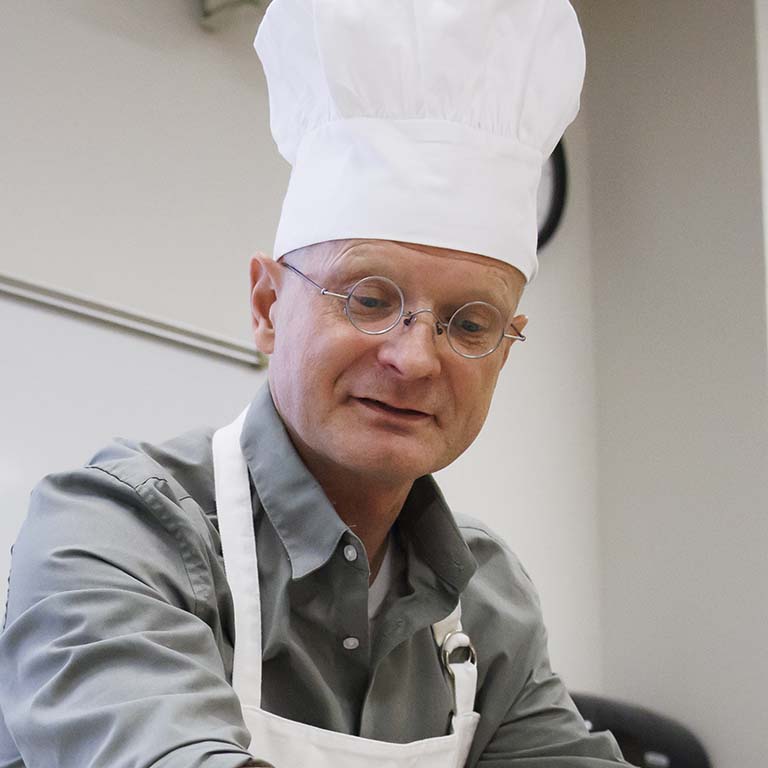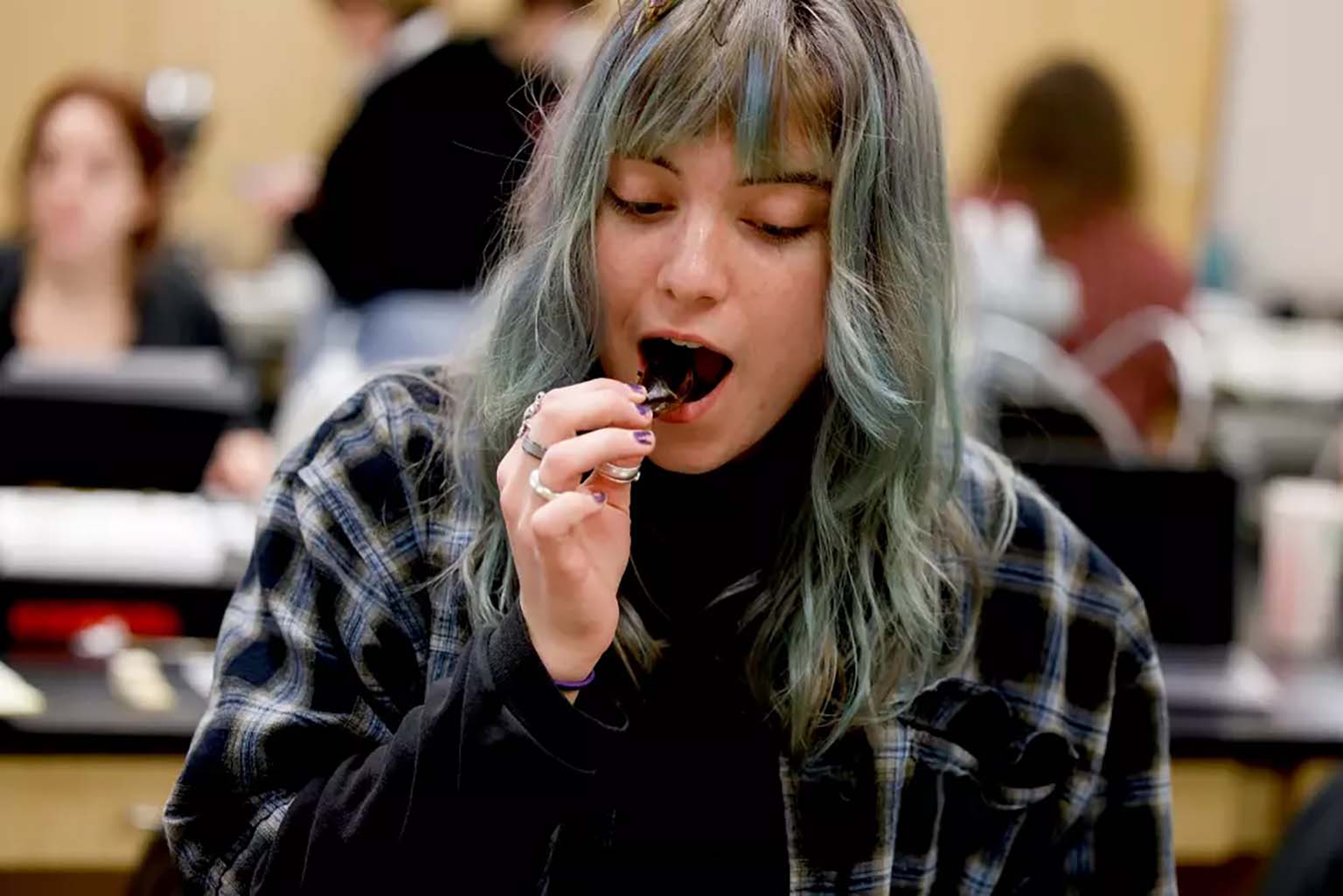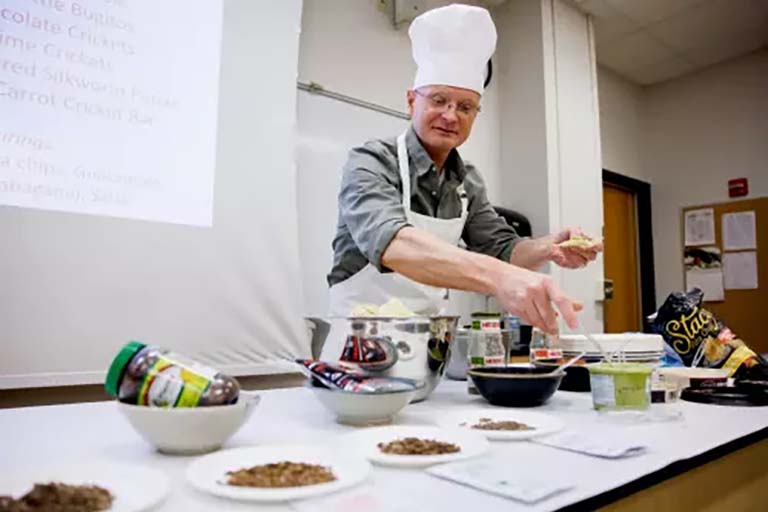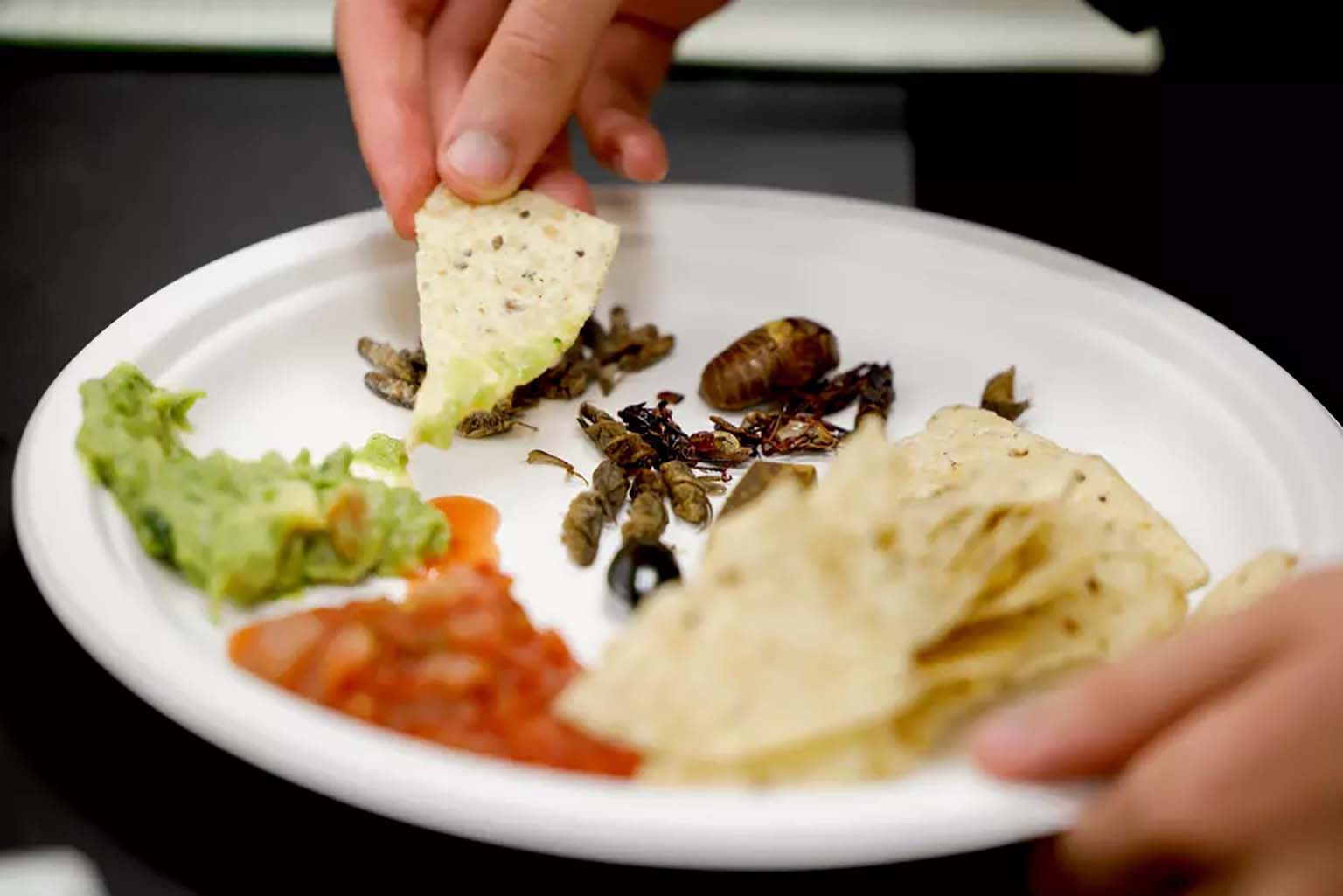Moczek said that yields of much of the planet’s food crops have plateaued, yet the population continues to increase. Beyond feeding humans, insects can help fight hunger and support more sustainable farming practices.
“When in the appropriate climatic conditions, you can rear extraordinary amounts of protein on the cheap using things that would otherwise be thrown away,” Moczek said. “You can convert bio waste that you would normally burn or compost into larval biomass which you then basically freeze dry and turn into a high protein supplementary feed for chicken or cattle.”
According to Moczek, using insects for human consumption is far more efficient than conventional meat farming. Crickets require a fraction of feed to produce equivalent protein. The energy input to protein output ratio for crickets is around 4:1. Raised livestock has a ratio closer to 54:1.
When it comes to insects as food for humans, Moczek says Western societies are not as keen on bug cuisine as their counterparts elsewhere. At the same time, he pointed out to his students that they have been eating insects their entire lives, whether they were aware of it or not. He presented them with food defect action levels published by the United States Food and Drug Administration’s Center for Food Safety and Applied Nutrition. The levels define legal amounts of natural or unavoidable contaminants allowed in food. Those contaminants could include insects, mold, rodent hairs, and feces.
“I have a whole list of all the contaminations you just had for breakfast today,” Moczek said.
He used several examples from the legal limits set by the FDA, including:
- 100 grams of canned corn may contain up to 2 insects or larvae.
- 100 grams of ketchup may contain up to 30 fruit fly eggs.
- 100 grams of frozen broccoli may contain up to 60 aphids, thrips, or mites.
- 10 grams of ground thyme may contain up to 925 insect fragments.
- 10 grams of shredded carrots may contain up to 800 insect fragments.
For context, one can of corn is 400 grams.
Moczek said the bottom line is that where food is produced, insect contamination and incidental consumption are inevitable. This knowledge may help Western consumers be more open to adding insects to their diets, provided the taste and texture are palatable.
“I must admit, the majority of insect dishes I have eaten myself were not that great,” Moczek said.





 The College of Arts
The College of Arts